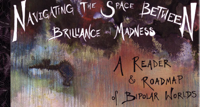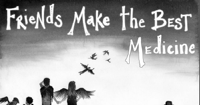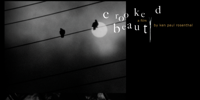ON ZEN PRACTICE AND SCHIZOPHRENIA
Submitted by Icarus Project on Tue, 07/10/2007 - 10:25am
ON ZEN PRACTICE AND SCHIZOPHRENIA
Meghan Jisho Caughey
contact Meghan at lotusfire AT proaxis DOT com
When I was fifteen years old I discovered the teachings of the Buddha. For me it was a time of clarity and peace in the middle of the otherwise turbulent adolescent years.
When I was nineteen years old I discovered the land of schizophrenia with its characteristic visual and auditory hallucinations. Suddenly, my sensory perceptions were overloaded with threatening voices, distorted visual and kinesthetic forms and it was as if my very eyes, ears---ay, my brain could not be trusted.
This would be my life for the next thirty or so years and my Zen practice would weave its way through the hospitalizations, the suicide attempts, the shock treatments, with persistence like a silver thread woven through a length of indigo cloth.
So this is what I have found during the hours on the cushion. First of all, let me say, Zen practice, for me, is hardly ever relaxing. I don’t do it because it feels good. Just in the last few years, due to a better medication, it does occasionally feel somewhat peaceful. But much of the time, it is simply uncomfortable to sit there, and stay on the cushion.
I sit, and the internal voices often get louder. It‘s challenging.
I want to stop; I want to pay attention to the voices. They are seductive.
I try to count my breaths, if I can count to four, it is unusual.
I switch to listening to sounds meditation. External sounds---the bird in the tree outside, a car, the wind in a tree, my dog’s snoring. This actually works quite well fairly often when I am hearing voices because it competes with the voice; it changes the focus if I can do it for a little while.
Sometimes the voices or a body distortion will be really stubborn. I am just stuck with it.
There I am, on the cushion, no escape.
So what I have learned to do is just to be there.
I learned this in sesshin.
Just to be there. Moment by moment. With all the Stuff. Whatever.
I found out that it wasn’t going to kill me.
And then I found out that I could choose my attitude toward the Stuff.
Chose the feeling –tone.
So now, the practice goes something like this:
I’m sitting doing zazen and the scary perceptual stuff comes up,
And I recognize it, and I say to it, “Oh, so it’s you again!”
And I lovingly tell it,” Well, I’m putting the welcome mat out for you, just come right on in!”
And the scary stuff gets kind of smaller and not so scary, and sort of shuffles off into a corner, not so bad, after all.
Still, there are times when I just have to sit and it is like I am sitting in a snowstorm, or a war, except the energy is inside.
So, one might ask, why do I sit—if it is not peaceful—and there are not more moments of bliss?
Sometimes I ask myself this question, and what I get in touch with is that by sitting that I somehow connect with my True Nature. For me this is especially meaningful, because for years I thought that my True Nature was my disease, schizophrenia. But deep down, I could hear something else: Buddha Nature.
When I was in my early forties—I am now fifty-one—I took the Precepts and Refuge in the ceremony called Jukai. I was given two Dharma names by my teacher. One name, Jisho, means compassion for all life. My teacher made a point to say that I must have compassion for myself. The other name is Ahimsa: nonharming. This meant to me that I could no longer act out self destructively, regardless of what the voices told me to do. I had to change my life.
I owe my life to this practice. My gratitude is beyond words.
To sum it up, I would say that my practice with schizophrenia is just moment by moment, stay on the cushion with whatever comes up, and it is all workable, if you just stick it out.



















I switch to listening to
I switch to listening to sounds meditation. External sounds---the bird in the tree outside, a car, the wind in a tree, my dog’s snoring. This actually works quite well fairly often when I am hearing voices because it competes with the voice; it changes the focus if I can do it for a little while.
kim